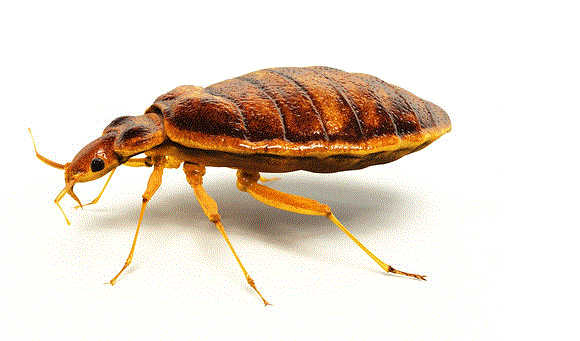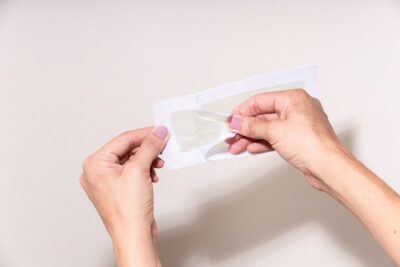Bed bugs are a common nuisance in households across the world. These tiny, blood-sucking insects can cause much stress and anxiety for homeowners, as they are notoriously difficult to remove once they have infested a home.
However, with the right approach, it is possible to control a bed bug infestation and prevent them from returning. So this article will provide a comprehensive guide to bed bug control to make your home safe and healthy.
Following these steps for bed bug control in Melbourne, you can regain peace of mind and sleep soundly again.
Identifying Bed Bugs
Before you can begin to control a bed bug infestation, it is essential to be able to identify the insects themselves. Bed bugs are small, flat, and oval-shaped, with six legs and two antennae. They are typically reddish-brown, although they may appear more brown or translucent after feeding on blood. Adult bed bugs are usually about 5-7mm long or about the size of an apple seed.
Bed bugs are nocturnal, so they prefer hiding during the day. You typically find them in cracks and crevices near where people sleep, such as in mattresses, box springs, bed frames, headboards, and nightstands. You may also find them in other furniture or appliances near the bed, such as alarm clocks, telephones, or lamps.
To identify bed bugs, you need to look for some signs. One of the most common signs is blood spots or rust-coloured stains on sheets, mattresses, or clothing. These stains occur when bed bugs are crushed while feeding. You may also find shed bed bug skins or egg shells, which are pale yellow or translucent and about the size of a pinhead.
Another sign of a bed bug infestation is small, red bites on the skin. These bites are usually in a line or cluster and may be accompanied by itching or swelling. However, not everyone reacts to bed bug bites, so the presence of bites is not always a reliable indicator of an infestation.
Preventing Bed Bugs
Preventing bed bugs from entering your home is the best way to control an infestation. Here are a few tips.
- Examine second-hand furniture, particularly mattresses and box springs, before bringing them into your home.
- Reduce the clutter in your home to limit hiding places for bed bugs.
- Vacuum frequently to remove any potential hiding spots for bed bugs.
- Use bed bug-proof mattress encasements to prevent bed bugs from entering or escaping your mattress.
- Be cautious when travelling, as bed bugs can easily hitch a ride on your luggage or clothing.
- If you suspect you have been exposed to bed bugs while travelling, scrutinise your luggage and clothing before bringing them into your home.
Controlling Bed Bugs
If you already have a bed bug infestation, there are several steps you can take to control the problem. Here’s a guide to bed bug control:
- Identify the infested areas: Inspect your bed and surrounding furniture for signs of bed bugs, such as rust-coloured stains on sheets and mattresses, shed skin, and small red bites on the skin. Use a flashlight to inspect seams, folds, and other hiding spots.
- Remove infested items: Once you have identified the infested areas, remove any infested items, such as bedding, clothing, and furniture, and place them in sealed plastic bags. It will help prevent the bed bugs from spreading to other areas of your home. Be sure to label the bags as infested and dispose of them properly.
- Clean infested areas: Thoroughly clean and vacuum-infested areas, paying close attention to cracks and crevices where bed bugs may be hiding. Seal and dispose of vacuum bags immediately after use.
- Use heat treatments: Heat treatments are one of the most effective ways to kill bed bugs. Professional pest control services can use specialized equipment to heat infested areas to a temperature lethal to bed bugs.
- Use insecticides: Insecticides can also be effective in controlling bed bugs. Be sure to choose a product specifically labelled for bed bug control, and follow the instructions carefully.
- Consider professional pest control services: If you are unable to control the infestation on your own, consider hiring a professional pest control service. They can provide more advanced treatment options and help prevent re-infestation.
Preventing Re-Infestation
Preventing re-infestation is critical to successfully controlling a bed bug infestation. Here are some tips to prevent bed bugs from returning:
- Continue to vacuum and clean infested areas regularly.
- Check second-hand furniture before bringing it into the home.
- Be cautious when travelling, and inspect your luggage and clothing carefully before bringing them into your home.
- Consider using bed bug monitors to detect bed bugs early and prevent infestations from becoming established.
- If you live in an apartment building, notify your landlord or property manager immediately if you suspect bed bugs are present in your unit. They may need to take steps to treat adjacent units and common areas to prevent the infestation from spreading.
Conclusion
Dealing with a bed bug infestation can be a frustrating and stressful experience, but with the right approach, it is possible to control the problem and prevent re-infestation. Remember to be diligent in your efforts to prevent bed bugs from entering your home, and take immediate action if you suspect that you have an infestation.
For effective bed bugs control in Melbourne, you must first focus on finding the right service provider. Otherwise, the chance of re-infestation will be higher.
RF Pest Management is one of our best recommendations for pest control. Check out their services and talk to them directly if necessary before making your decision.









